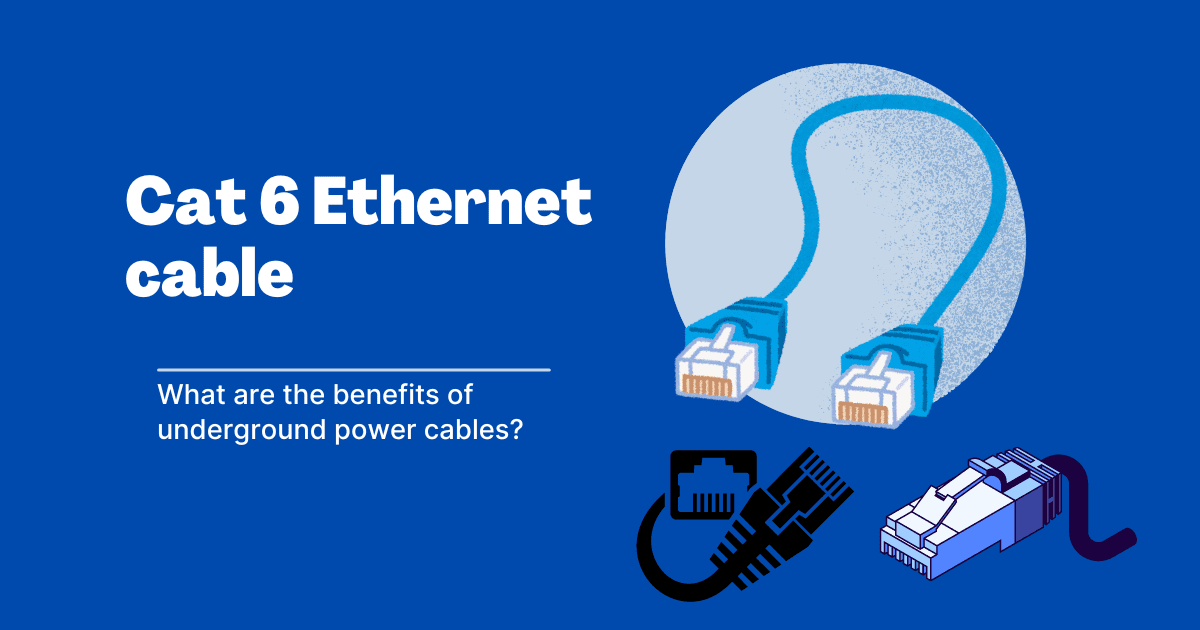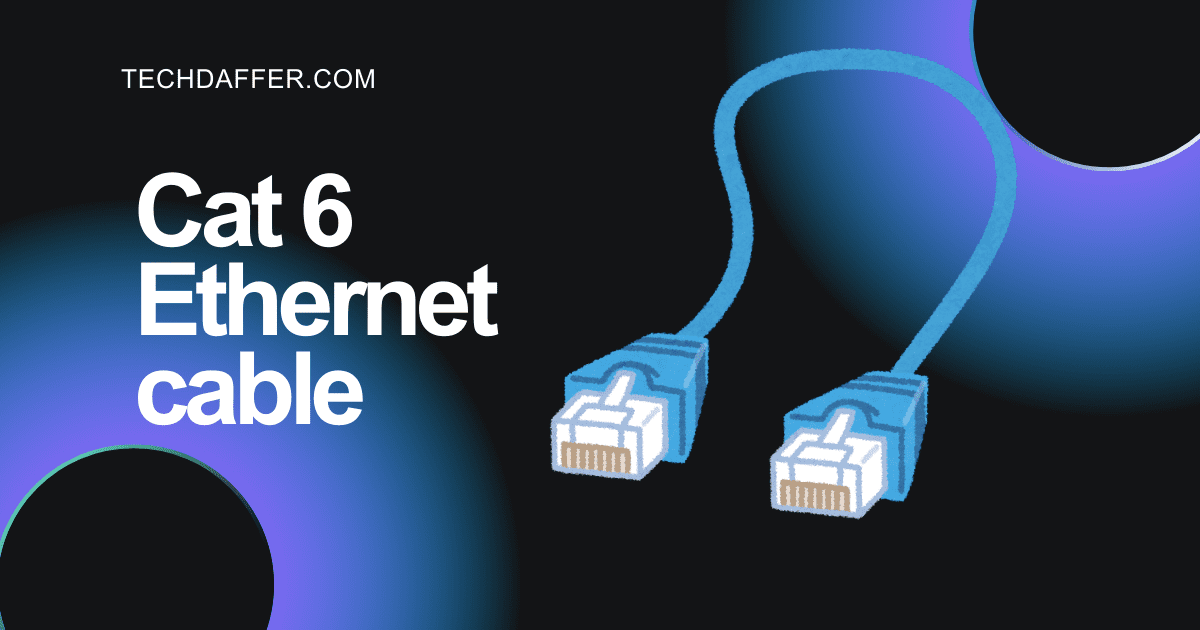Cat 6 Ethernet cable is important in ensuring smooth and reliable internet connectivity. But with so many options available, it can be overwhelming to determine which one is best suited for your needs. In this comprehensive guide, we’ll explore the differences between Cat 6, Cat 7, and Cat 8 Ethernet cables to help you make an informed decision.
What is an Ethernet cable?
Ethernet cables are the backbone of wired internet connections, providing a physical link between devices such as computers, routers, and switches. They transmit data packets using twisted pairs of copper or fiber optic cables, allowing for high-speed data transfer.
Understanding Cat6 vs. Cat 6 Ethernet Cable

Users widely use Cat6 and Cat 6 Ethernet cables for gigabit Ethernet networks, but they vary in terms of performance and specifications Cat 6 cables support speeds up to 1 Gbps over short distances, while Cat 6a cables offer higher bandwidth and can transmit data up to 10 Gbps over longer distances.
Which cable type is the best?
The choice between Cat 6, Cat 7, and Cat 8 Ethernet cables depends on your specific requirements, such as bandwidth, transmission speed, and distance. Cat 6 cables are suitable for most home and small business networks, while Cat 7 and Cat 8 cables offer faster speeds and better shielding for larger, high-performance networks.
What applications run on Cat 6 Ethernet cables?
Cat 6 Ethernet cables can support a wide range of applications, including internet browsing, streaming media, online gaming, and file sharing. They provide reliable connectivity for both residential and commercial environments.
What is a Category 6 cable?
A category 6, or Cat6 cable, is a specific type of Ethernet cable. It was first introduced in 2002, and power over Ethernet (PoE) was introduced on Cat6 cables in 2003.
Four pairs of copper wires make up the cable. Blue wires, blue and white wires, brown wires, brown and white wires, green wires, green/white wires, orange wires, and orange/white wires make up a standard Cat6 cable.
Cat6 Ethernet cables are known for their speed and efficiency. A Gbps or 250MHz connection is possible. As networks become faster and faster, these cables will soon be the standard.
In some cases, people are hesitant to install Cat6 cables because they are thicker and more cumbersome than Cat5e cables. Furthermore, a more expensive cable can be hard to justify.
Although Cat6 cables used to be cumbersome, they are no longer. Cat6 cables are also a smart choice if you want to future-proof your network. If you choose Cat5e, you may soon find that new cables need to be installed. This would waste a lot of time, money, and resources in your business.
If, however, you already have other Ethernet cables installed and you want to begin to install Cat6 cables. They are backward compatible with other cable categories.
The Best Ethernet Cable for Gaming
For gaming enthusiasts, low latency and high speed are essential for a seamless gaming experience. Cat 6 cables are often recommended for gaming setups, and offer sufficient speed and performance to handle online gaming without lag or interruptions.
What Is Cat 6 Ethernet Cable Used For?
Any device connecting to a local area network for internet access uses Cat6 Ethernet cables. This might include desktops, laptops, TVs, and other devices on the Internet of Things (IoT).
Cat6 cables can support the following networks: 10Base-T, 100Base-TX, 1000Base-T, and 10 GBase-T. These are all various types of high-speed Ethernet networks.
Advantages and Disadvantages of Cat 6 Ethernet Cables
- While Cat 6 cables are cost-effective and widely compatible, they may not be suitable for environments with heavy electromagnetic interference or long cable runs.
- Additionally, they have lower bandwidth compared to newer cable types such as Cat 7 and Cat 8.
Is a Cat 6 Ethernet cable right for your business?
Businesses must carefully consider their networking needs when choosing Ethernet cables. Cat 6 cables may suffice for small to medium-sized businesses with moderate data transfer requirements. Still, larger enterprises may benefit from the higher speeds and performance offered by Cat 7 and Cat 8 cables.
Should You Consider a Faster Cable, Such as Cat 8?
For high-speed switch-to-switch communications in a 25G or 40G network, Cat 8 is advised. Cat 6 or Cat 6a cables will be more than fast enough in all other scenarios. They cost less and are easier to install.
Next Steps
- With its Cable Finder tool, we can help you find the right cabling for almost any application. Choose the connectors on each end, and let the Cable Finder do the rest.
- For assistance in finding the perfect Cat 5e, Cat6, or Cat6a cable to complete your network upgrade, expansion, or installation, see Tripp Lite by Eaton’s Network Cable Matrix for a choice of applications, lengths, and colors.
- Alternatively, you can use the online competitor cross-reference tool to compare Eaton’s Tripp Lite cables to those made by other companies and see how they differ.
Exploring Cat 7 and Cat 8 Ethernet Cables

Cat 7 and Cat 8 Ethernet cables aim to meet the demands of next-generation networks by providing faster speeds, higher bandwidth, and improved shielding against interference. These cables are ideal for data centers, enterprise networks, and other high-density environments.
How long should a Cat 6 Ethernet cable be?
The length of an Ethernet cable can affect signal quality and performance. While Cat 6 cables can support distances of up to 100 meters without signal degradation. Longer cable runs may require signal boosters or fiber optic cables for optimal performance.
Conclusion
In conclusion, choosing the right Cat 6 Ethernet cable involves considering speed, bandwidth, distance, and environmental conditions. Whether you opt for Cat 6, Cat 7, or Cat 8, select a cable that meets your specific networking needs. And providing reliable connectivity for your devices is essential. By understanding the differences between these cable types, you can make an informed decision. Ensure seamless internet connectivity for your home or business.
FAQs
What is the Cat6 Ethernet cable used for?
A Cat6 patch cable, also known as a Cat6 Ethernet cable. People commonly use this type of network cable to connect devices to a local area network (LAN) in homes, offices, and other buildings. It connects computers, routers, switches, and other networking equipment.
Is Cat6 better than WiFi?
Ethernet is indeed faster than Wi-Fi. The common Cat6A Ethernet cables are rated for speeds of 10 gigabits per second (Gbps) and consistently deliver that performance. On the other hand, even the fastest Wi-Fi standard, Wi-Fi 6E. Can only reach speeds of a few gigabits per second.
What is the speed limit for Cat 6?
Cat 6 supports data transfer speeds up to 10 Gbps at 250 MHz with crosstalk interference, due to the cable’s improved insulation. However, its 10 Gbps speed is effective only up to 164 feet.










